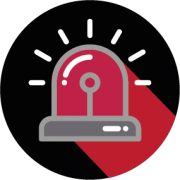 (Updated 5/4/20)
(Updated 5/4/20)
With some states and local jurisdictions beginning to loosen or remove stay-at-home and essential business orders and advisories, many small businesses will begin to adjust for the next phase of response and recovery. For some, this will be a re-opening; for others it will be another shift in how we conduct our business on a day-to-day basis. Either way, the process will be a minefield of financial, operational, legal, liability, and personnel issues. Before “flipping” the sign from closed to open, plan your return with care and compassion. Both will be needed to keep your employees, customers, and business safe.
Prepare the Groundwork
Guidance on opening is coming from many sources. We recommend a top-down approach, starting at the federal level and working down the your local municipalities and property owners.
- Start with the expertise and guidance from the US Centers for Disease Control and Prevention (CDC). The CDC website provides guidance for different types of businesses and gathering places that centers on three mitigation strategies:
- Personal protective measures (e.g., hand-washing, cough etiquette, and face coverings) that persons can use at home or while in community settings
- Social distancing (e.g., maintaining physical distance between persons in community settings and staying at home)
- Environmental surface cleaning at home and in community settings, such as schools or workplaces.
- Review current laws and regulations under the Families First Coronavirus Recovery Act (FFCRA). This legislation requires almost all employers to provide expanded sick time, medical leave, and family leave pay for employees dealing with illness or childcare issues themselves or within their immediate family unit. Make sure your return to work plans accommodate these programs and
- Second, understand your state’s rules and regulations with with respect to physically opening your business. Many states are staging how they will allow business to open. Then, check with local governments where your business is located and where your employees live. In some states, municipalities and counties are adjusting how they implement state and federal orders and advisories to address local needs and issues.
- Understand your state’s unemployment rules and regulations. In some states, lifting of stay-at-home orders may mean employees are no longer eligible for unemployment even if you keep your business closed or cannot bring everyone back to work. Your team will have differing concerns and levels of comfort; it is important to provide them with timely and accurate communications.
- Check with your landlord. Many office and retail complexes are setting up guidelines and rules for how businesses can and will be able to operate in their properties. Some office complexes, for example, are limiting access to employees only and restricting access to trades and delivery personnel.
- Ask your landlord what additional steps they will be taking to clean and sanitize bathrooms, elevators, stair railings, door handles, and other common areas and high touch surfaces. You and your employees will want and need to know how safe the environment will be when then return to the office or store.
With an understanding of how you can and want to take your next steps, create a Communications Plan. More than just determined who, when, and how you will share information with employees and other stakeholders, the plan should provide a clear and easy way for employees to get answers to their questions. As many smaller businesses do not have internal HR resources, you may want to assign a particular manager or executive team to the role. If you have a contracted HR service or consultant, you will need to coordinate both the process and information. Set clear expectations for how quickly you will answer questions and how answers to common questions will be addressed to the company at large.
Prepare Your Place
As you do your groundwork, begin planning and putting your workplace together for the return of staff. Social distancing is the current normal. With an expected recurrence of COVID-19 in the fall, social distancing will be part of our lives, and work places, for some time to come. For employees to return, you may be considering:
- Setting up protocols to ensure that workers who may be ill, or have been exposed, do not enter the workplace and accidentally infect others.
- Placing dividers between work spaces, or re-configuring your office layout to create separation.
- Acquiring additional office space, temporarily, to allow more team members to return.
- Requiring the use of masks or other appropriate personal protective equipment (PPE). Depending on your work environment, this may be full-time or only when employees leave personal work spaces and head to common or communal areas.
- Cleaning and sanitation of common areas, like kitchens and break rooms, and high touch surfaces.
- Coordinating disinfection and sanitation efforts with building management and neighboring businesses in leased office spaces.
- Ensuring availability of cleaning supplies, disinfectants, and sanitizers.
- Creating a means for employees to express concerns about the work environment and actions of others, without fear of retribution.
For some businesses, the safest course of action will be establishing split shifts or a rotating schedule of employee teams working in the office. Doing so can ease physical separation issues, but we should expect that some employees will need to, or want to, continue working from home.
Prepare Your People
Communications — timely, open, and honest — will be critical for successfully taking the next steps with your business. For many, personal anxiety and stress will be high as we navigate shifts in our personal and work lives.
Provide your team as much information as possible on what to expect, and how things will move forward, as you go through each upcoming phase of your plans.
As you communicate with your team, keep in mind that employees may be dealing with personal COVID-19 impacts, such as:
- Death of a family member of close friend
- Sick or quarantined family member(s)
- Loss of income by a spouse/partner/family member
- Supervision of children learning from home
- Lack of available daycare
- Anxiety and stress
- Feeling unable to return to working in the office
Be prepared to deal with the human side of Covid-19, not just the logistics.
- Anticipate and have answers ready for employees about your requirements and their options
- Establish a feedback loop and listen to staff issues and concerns
- Engage your HR staff, service, or consultants to assist with communications, feedback, and responses
- Update plans and timing as needed to mitigate staff concerns and business conditions
Prepare to Settle In
Set Expectations
As noted, above, experts are telling us to expect local/regional COVID-19 outbreaks throughout the fall and winter. With this expectation, we should plan for future stay-at-home orders and business restrictions. These will likely vary by location, complicating your planning efforts.
Remote work will be part of our operations for the foreseeable future. As you plan your next steps, make sure that your team is ideally equipped to continue working from home.
In the scramble to respond to stay-at-home orders, many businesses make necessary technology decisions for the near-term. Now is the time to step back and take a long-term view. Employees may be working on home computers, using personal software, and working in a less-then-ideal space. Many businesses are also finding employees have signed up for free or consumer IT services to work around limitations, such as difficulty accessing files on company servers. We still have a responsibility to keep information secure and private, and our employees and businesses safe.
Get Your IT Resources in Place
Settling in means adapting work environments — at the office and in employees’ homes — to our anticipated reality.
- Improve security and access to company systems and data
- Move data from on-premise servers to cloud file services to improve access and security; Map drives to cloud-data for compatibility with desktop software
- Use Remote desktop and VDI solutions to move on-premise applications to the cloud, providing easy, high performance access without distributing data to remote computers
- Ensure employees have workable use of your phone system (see this post for more info)
- Reduce the need for remote PC, VPN and other remote access solutions that increase cost, complexity, and delays
- Eliminate the need for shadow IT services by helping employees use existing capabilities in your productivity suite
- Provide devices for employees that do not usually work from home
- Consider rental, lease, and device-as-a-service option to manage costs
- If unable to provide devices, upgrade home computers:
- Add memory for performance and ensure the ability to run business applications
- Deploy licenses of business software, even if employees are using consumer versions of the applications
- “Next Gen” endpoint protections from viruses, malware, and ransomware
- Web filtering and DNS security to prevent malware from infected websites
- Provide employees with helpful accessories, such as noise cancelling headsets for video calls
We are here to help you plan and execute your next steps. Our free Response and Recovery Assessment will help you with your planning, fully utilize your existing IT Services, and identify budget-friendly solutions to address any unmet needs and priorities. Email us or complete the form on our home page to schedule your assessment.
 The Impacts: Profits, Revenue, Cash, and Survivability
The Impacts: Profits, Revenue, Cash, and Survivability
